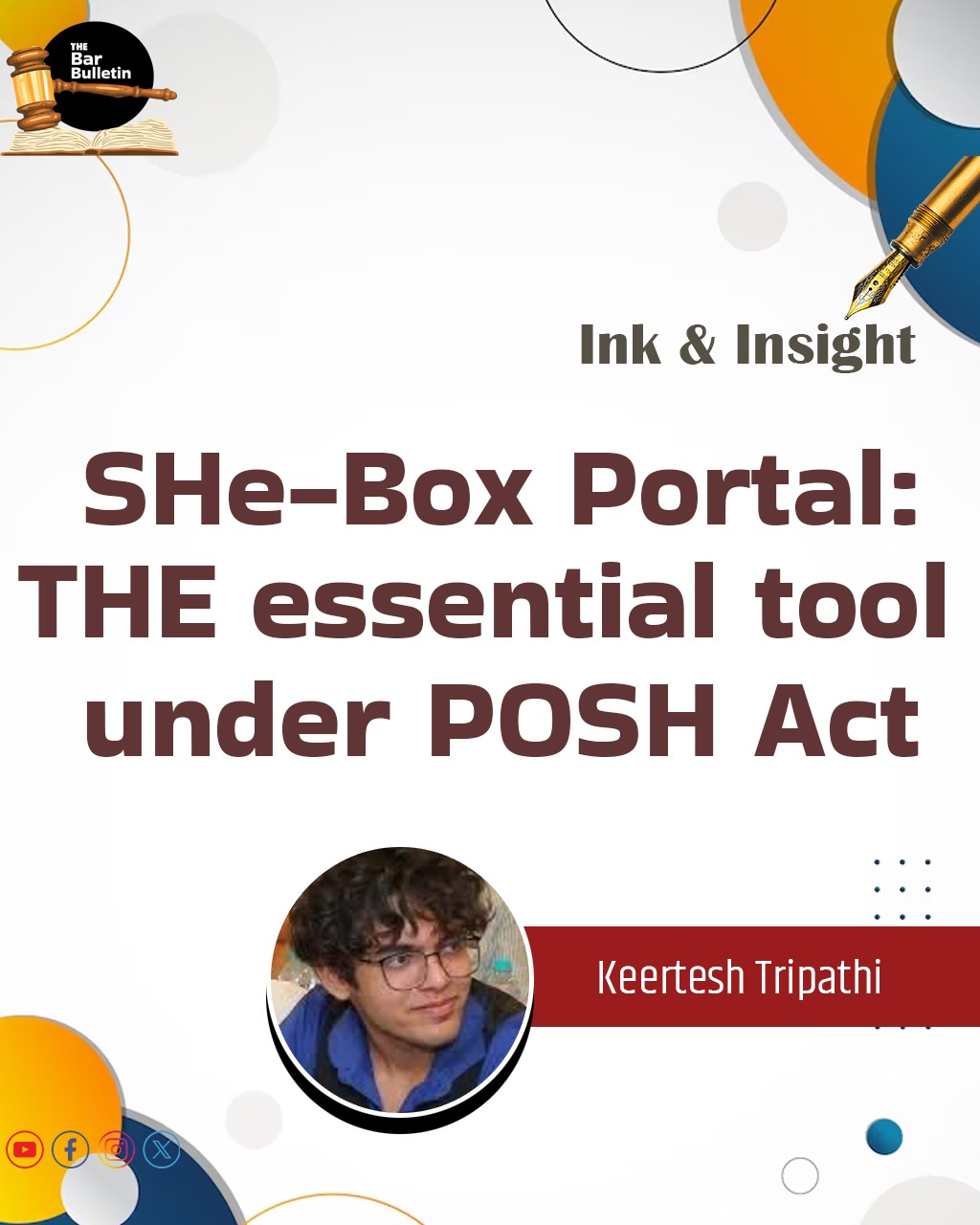On 3rd July, 2025, the Delhi High Court hosted the inauguration ceremony for the launch of the Sexual Harassment Electronic-Box (“SHe-Box Portal”). Supreme Court Judge Justice N. Kotiswar Singh, Delhi High Court Chief Justice Devendra Kumar Upadhyaya, Delhi High Court Judge and Chairperson of the Internal Complaints Committee (ICC) Justice Pratibha M. Singh, alongside other Judges, senior advocates, and members of the Delhi Court Bar Association and Bar Council of Delhi, graced the event.
Background of the Portal
In March 2024, Hon’ble Supreme Court directed the District Officers to upload POSH implementation details on the SHe-Box portal, through Misc. Application Diary No. 22553/2023.[1] The Ministry of Women and Child Development (MWCD) launched an enhanced version of the SHe-Box Portal on 29th August, 2024. This portal streamlines the process for filing and tracking sexual harassment complaints. With increased focus on accountability and transparency, the SHe-Box Portal is now positioned as both a platform for aggrieved women to file complaints, and a mandatory compliance tool for employers. These series of events made it evident that SHe-Box was no longer just an optional resource; it cemented itself as an essential compliance infrastructure under the POSH Act. Reinforcing this, the Department of Women and Child Development, Delhi issued a public notice on 12th June, 2025, requiring all public and private organisations to register on the SHe-Box portal. For the convenience of our readers who want a more detailed understanding of the portal, we are attaching the link for the FAQs.
The Law in Place
The Government of India (GoI) enacted the POSH Act in 2013 to create a safe and secure workplace for women free from sexual harassment. This Act caters to women working in both organised and unorganised sectors and establishes a redressal mechanism for the disposal of their complaints. Its broad coverage includes all women irrespective of their work status, whether in organised or unorganised, public or private sectors, regardless of hierarchy, including domestic workers. It defines sexual harassment comprehensively, covering circumstances of implied or explicit promise or threat to a woman’s employment prospects or creation of a hostile work environment or humiliating treatment affecting her health or safety.
Section 4 of the POSH Act mandates every employer with 10 or more employees to constitute an Internal Committee (IC) at each office or branch. This essential redressal body must be chaired by a senior woman employee (Presiding Officer) and include at least two other employees (preferably with experience in social issues or legal knowledge) and crucially, one external member from an NGO or association committed to women’s causes. The IC is responsible for receiving complaints, conducting fair inquiries adhering to natural justice, recommending action to the employer, and monitoring implementation. Section 10 of the Act provides a specific mechanism facilitated by this IC: conciliation. Initiated only at the express request of the aggrieved woman before a formal inquiry begins, this voluntary process aims for a mutually agreed settlement between her and the respondent, potentially including monetary compensation. The IC facilitates neutrally, records any settlement reached, and closes the matter if successful. Critically, no inquiry is conducted during conciliation. If conciliation fails, is withdrawn by the complainant, or the terms are breached, the IC must immediately commence a formal inquiry under Section 11. Thus, Section 4 establishes the mandatory committee, while Section 10 offers a complainant-driven, pre-inquiry conciliation path facilitated by that committee.
The Hon’ble Supreme Court of India, in its landmark judgment Aureliano Fernandes v. State of Goa, issued a directive which mandated all the states to make sure that there is compliance with the Act’s provisions, specifically with respect to the constitution of ICC’s and LCs within all organizations. This ruling underscored the necessity for all the states to activate or establish the SHe-Box Portals to ensure women have an accessible platform for filing workplace harassment complaints. Furthermore, any discussion on POSH is incomplete without the mention of the landmark Vishaka v. State of Rajasthan, AIR 1997 SC 3011, commonly referred to as the “Vishaka Guidelines,” which established crucial guidelines for preventing and addressing sexual harassment at the workplace in the absence of specific legislation, responding directly to the lack of legal provisions.
Conclusion
The launch of the SHe-Box Portal is a big step forward in protecting women at work. It makes it easier for women facing harassment to report it and track their complaints. For employers, it’s now a required tool to show they are following the POSH law properly. The portal builds on the POSH Act’s main goal: creating safe workplaces for all women, everywhere they work. It supports the special workplace committees (ICs) that handle complaints, including their option for voluntary settlements. This system puts important court rulings into action, making the promise of safety at work more real for women across India.

* Law Graduate, Symbiosis Law School, Pune.
[1] https://api.sci.gov.in/supremecourt/2023/22553/22553_2023_11_3_52112_Order_09-Apr-2024.pdf.


One thought on “SHe-Box Portal: The essential tool under POSH Act”
Useful article 👍